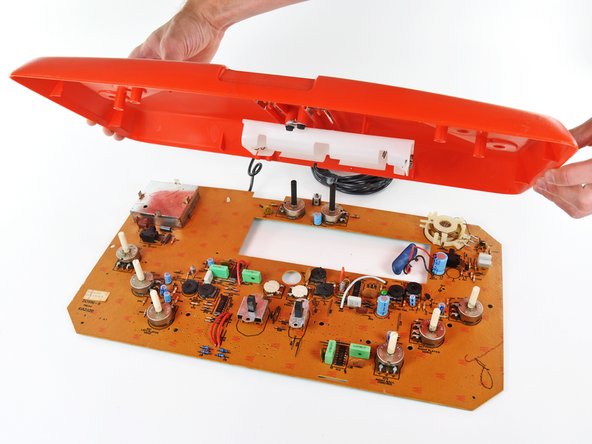
The Magnavox Odyssey was the world’s first home game console. The machine, designed by Ralph Baer (widely considered the father of video games), was released in 1972. Today, we’re taking apart the Odyssey 100 — the immediate successor to that groundbreaking console. Join us as we take a journey back in time to 1975 and peek inside one of the great forefathers of the video game industry.
The Odyssey 100 is the first of five special retro game console teardowns we’re doing to celebrate the completion of our game console repair manuals. Tomorrow we’ll continue our voyage into the past and tear down one more piece of our history!
Teardown Highlights:
- In 1975, the Magnavox Odyssey 100 was nothing short of awesome. It packed in:
- Black & White graphics
- Two games! (tennis AND hockey — that’s 100% more games than Pong)
- Manual scoring (yes, you read that right: manual sliders)
- Three control knobs for each player
- On-board “sound” (a piezo buzzer)
- Repairability +1: A single flathead screw is all that holds the bottom panel to the Odyssey 100.
- A piece of cardboard shields the motherboard by being sandwiched between the bottom cover and the PCB. We’d never see this in a modern console; today’s microelectronics require metal shielding to prevent electromagnetic interference.
- Simplicity is king: It had just three control knobs: X, Y, and ball trajectory. Compare that to today’s DualShock 3 controller, which has two analog sticks, a d-pad, and 13 buttons.
- The Odyssey 100 had the option of being powered by either an external wall adapter or by six “C” cell batteries. Your Xbox 360/Wii/PS3 isn’t as fortunate.
- The four ICs in the Odyssey 100 were fabbed by Texas Instruments. These 16 pin DIPs are architecturally somewhat different from the TI’s OMAP 3630 we found in the Droid 2. But the TI logo is still just as retro cool!
- The motherboard has a single layer of conductive traces connecting all the components. Contrast this to modern circuit boards, which can have eight stacked layers of traces.





0 opmerkingen